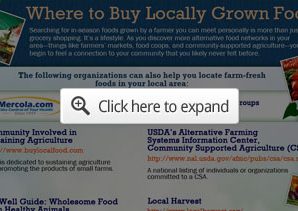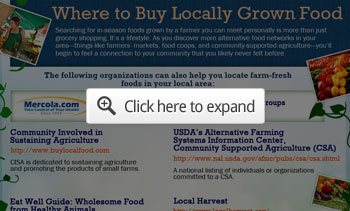Smithfield Is Engineering Pigs for Use in Human Transplants
More Information
By Dr. Mercola
The world’s largest pork producer, Smithfield Foods, is branching out from ham and bacon toward the business of organ transplantation. The CAFO (concentrated animal feeding operation) giant has even created a new bioscience unit for this purpose, in the hopes of growing pig organs that could one day be transplanted into humans.1
In 2013, Smithfield was bought by WH Group (formerly known as Shaunghui), the largest meat processing company in China.2 At $7.1 billion — 30 percent above its estimated market value — it was the largest-ever Chinese buyout of an American company.
Smithfield is now part of a public-private tissue engineering consortium, along with pharmaceutical and other health care companies, that’s being funded via an $80 million U.S. Department of Defense grant.3
The move isn’t surprising. Reuters reported that “materials” from 16 million Smithfield pigs, including pancreases, intestinal membrane and thyroid glands, are sent for medical uses every year.
The market for such products, as well as pork byproducts used for pet food and other non-food purposes, is more than $100 billion in the U.S. alone.4 Courtney Stanton, VP of Smithfield Bioscience, told Business Insider, just how they plan to cash in on the less popular (food wise) pig parts:5
“First and foremost, we are a food company … Part of that responsibility is making sure we utilize the entire animal, and minimize waste. There are many parts of the animal which are not typically eaten.
However, we have found valuable uses for these parts such as supplying them to the medical community.”
Are Pig-Human Organ Transplants Coming?
It hasn’t happened yet, but the research is moving this way. One of the hurdles is that the organs could transmit viruses from pigs to people, but this has been somewhat tackled via technology like the gene-editing tool CRISPR, to “delete” the virus genes. There’s also a risk that the pig organs could be rejected in humans.
Other companies in the market, which come from the biotech industry, have bred pigs with human genes added to their livers, kidneys and hearts.6
Earlier this year, researchers from the Salk Institute for Biological Studies in La Jolla, California, made history by creating a human-pig hybrid, a task achieved by injecting days-old pig embryos with human pluripotent stem cells.7 Such cells, like embryonic stem cells, are able to divide indefinitely and become any type of cell in the body.
The human-pig embryos were then transferred into adult pigs and allowed to grow for up to four weeks, before they were “removed and analyzed.”8 The ability to grow human organs in pigs is undoubtedly an intriguing area of research, especially as about 76,000 Americans sit in wait of healthy organs for transplant.9
But the reality is that these GMO technologies could have unforeseen and devastating consequences. “The work inevitably raises the specter of intelligent animals with humanized brains and also the potential for bizarre hybrid creatures to be accidentally released into the wild,” The Guardian noted.10
Indeed, no one knows if inserting human cells into non-human animal embryos might lead to the creation of non-human animals with human consciousness. For Smithfield, however, ethical considerations don’t appear to be top of mind.
The company is one of four multibillion-dollar transnational companies — Tyson, JBS and Cargill are the others — that produce about 85 percent of U.S. CAFO meat.
As Ronnie Cummins of the Organic Consumers Association put it, “[W]hat the Big Four fear … is the thought of consumers waking up to the horrors of factory farms, and the filthy, contaminated meat that comes out of these animal prisons.”
North Carolina’s Pig CAFOs Produce 10 Billion Gallons of Fecal Waste Annually
North Carolina is the second biggest pork-producing state, which means it’s home to more pig CAFOs than average. Smithfield owns most of them in the state.11 Some CAFOs treat animal feces in open-air lagoons and dispose of the waste by spraying it onto nearby fields.
The creation of new CAFO lagoons, and the spray systems, were banned in 2007, but older farms were allowed to continue their use. The term “lagoon” is a misnomer, by the way.
Cesspool would be more accurate, as CAFOs do not treat the animal feces in any way. They simply add it to the often-unlined lagoons until they figure out where they can spray it.
In the meantime, the liquefied waste often leaches into groundwater and wells, poisoning drinking water. When it’s sprayed onto fields, it often runs off into waterways, where the excess nutrients lead to algae overgrowth that depletes the water of oxygen and kills fish and other marine life.12
It’s hard to imagine the magnitude of waste being produced by Smithfield’s North Carolina CAFOs, but this may help — the state’s pig CAFOs alone produce nearly 10 billion gallons of fecal waste annually, which is enough to fill more than 15,000 Olympic-size swimming pools, according to an analysis of maps and data of the state’s CAFOs by the Environmental Working Group (EWG).13
Manure spills can and do happen, both from hog and other animal CAFOs. Earlier this month, for instance, a staggering 190,000 gallons of waste spilled from an above-ground storage tank at Tony Silveira Dairy in Tillamook, Oregon, because of a broken valve.
Tillamook Bay, which is home to several commercial oyster growers, was closed to shellfish harvesting as a result.14
CAFOs Are Knowingly Placed in Flood-Prone Hurricane Regions, Increasing Risks
Some North Carolina CAFOs face a unique threat that the others don’t: hurricanes. Many pigs drown in confinement when flooding occurs, since many of the CAFOs are knowingly placed in flood-prone areas.
Aside from the ethical ramifications, there is also the added issue of how to dispose of millions of decaying and likely disease-ridden carcasses.
The year of Hurricane Floyd, eastern North Carolina experienced a “large increase” in visits to health services for intestinal infections in counties with high concentrations of pig farming that were affected by the hurricane.15 Even a splash of floodwater on your face or open cut could be enough to cause infection.
Floodwaters from hurricanes can cause the already dangerous lagoons (which emit toxic fumes and often leach toxins into groundwater) to overflow, allowing tons of untreated animal feces to flood the area.
This isn’t only theoretical; it’s already happened in 1996 following Hurricane Fran, in 1998 following Hurricane Bonnie, in 1999 following Hurricane Floyd, practically every year in many locations — including in 2016 following Hurricane Matthew.
It’s not only Smithfield that’s guilty of these environmental and ethical affronts — other CAFOs are also culpable — but Smithfield is the only one of late that’s getting into the business of human organ transplantation, where ethics should be held in the highest regard.
If you want to see what a Smithfield CAFO looks like, watch the video above. In the featured clip, Mark Devries, who’s been investigating the environmental effects of CAFOs for years, flies a drone over one of Smithfield’s CAFOs.
Several warehouse-style buildings are lined up next to a giant open air cesspool the size of four football fields, filled with the excrement from the thousands of pigs housed in the buildings.
Xenotransplantation Coming in 2017?
Xenotransplantation, or cross-species organ transplants, could occur as early as 2017, as part of a clinical trial, according to Harvard Medical School genetics professor George Church. Church formed a company called eGenesis Bio that is developing “humanized pigs” in order for their organs to be transplanted into humans without being rejected. The trial would involve people who are too sick to receive human organ transplants.
Speaking to Reuters, Church said Smithfield would be a welcome addition to this emerging market. “Even though we’ve got companies like eGenesis that would make the first pigs, you still need someone who will breed them and do it to scale,” he said.16 Unfortunately, raising a large amount of pigs at little cost is what Smithfield knows how to do best.
The Department of Defense-funded coalition, meanwhile, which Smithfield is also a part of, says its goal is to develop “next-generation manufacturing techniques for repairing and replacing cells, tissues and organs for wounded service members.”17
If organs can one day be grown inside animals, we’re then faced with the realities of whether this — raising animals for the sole purpose of organ harvesting — can and should be done, ethically speaking. It falls into the realm of research moving full-steam ahead before we’ve adequately stopped to consider whether we should move forward at all. The same might be said for raising animals in CAFOs.
For Now, You Can Carefully Consider Where You Get Your Food
The era of food companies merging with biotechnology is only just beginning. Genetically engineered (GE) salmon has already been approved, paving the way for more GE animals to emerge.
We’ve also seen GE “pharmaceutical” corn used in an experimental trial for hepatitis B vaccine (grown in an environmentally sensitive area along California’s central coast, just 100 feet from a critical habitat for threatened wildlife species, no less). Smithfield’s move into pig-to-person organ transplants is not a huge leap, but it’s one that further blurs the line between farmers and corporate machines.
For now, you can take a precautionary stance by consciously considering where your next meal will come from. You vote three times a day when you choose the foods for your meals. Will you vote for the system that is systematically destroying your health, animal welfare and the planet — or will you support those who are changing the world for the better, one meal at a time?
There are basically two different models of food production today, and there’s growing conflict between them. The first, and most prevalent, is the CAFO model that takes a very mechanistic view toward life, whereas the other — the local, sustainable farm model — has a biological and holistic view.
I encourage you to support the small family farms in your area that respect the laws of nature and use the relationships between animals, plants, insects, soil, water and habitat to create synergistic, self-supporting, non-polluting and GMO-free ecosystems. Whereas industrial agriculturists want to hide their practices from you, traditional farmers will welcome you onto their land, as they have nothing to hide.
Whether you do so for ethical, environmental or health reasons — or all of the above — the closer you can get to nature the better. You’ll want to get your meat, chickens and eggs from smaller community farms with free-ranging, pastured animals, organically fed and locally marketed. This is the way food has been raised and distributed for centuries, before it was corrupted by politics, corporate greed and the blaring arrogance of the industrial food industry.
You can do this not only by visiting the farm directly, if you have one nearby, but also by taking part in farmers markets and community-supported agriculture programs. The following organizations can also help you locate farm-fresh foods in your local area, raised in a humane, sustainable manner.
>>>>> Click Here <<<<<
Source:: Mercola Health Articles




 Body Charge Nutrition is a premium nutritional supplement provider based in Western Canada offering only products and information that are of the highest quality and integrity. Through knowledge and personal experience, it is our goal to assist you with taking control of your health.
Body Charge Nutrition is a premium nutritional supplement provider based in Western Canada offering only products and information that are of the highest quality and integrity. Through knowledge and personal experience, it is our goal to assist you with taking control of your health.